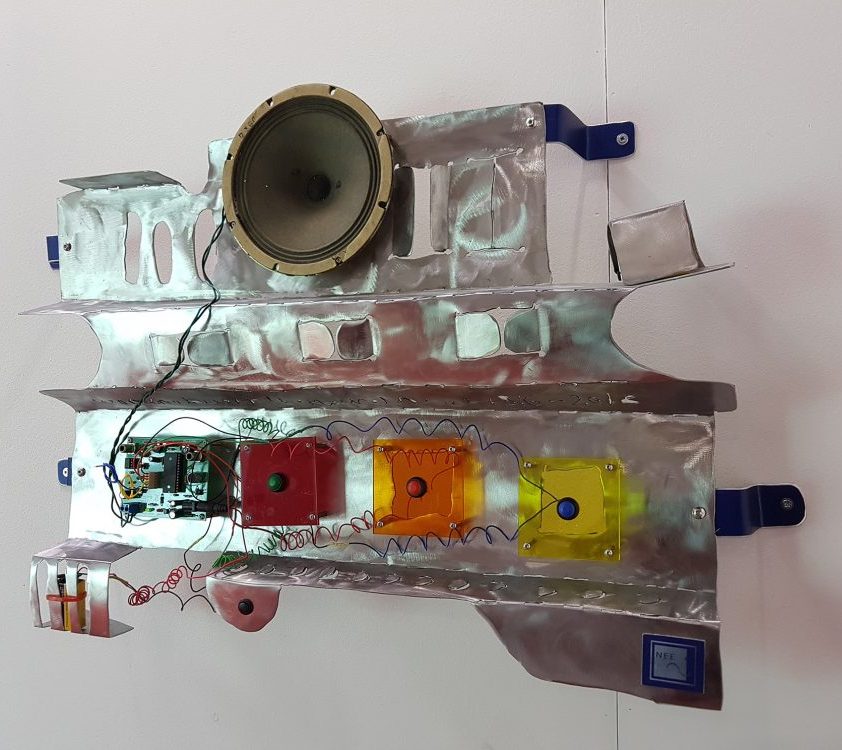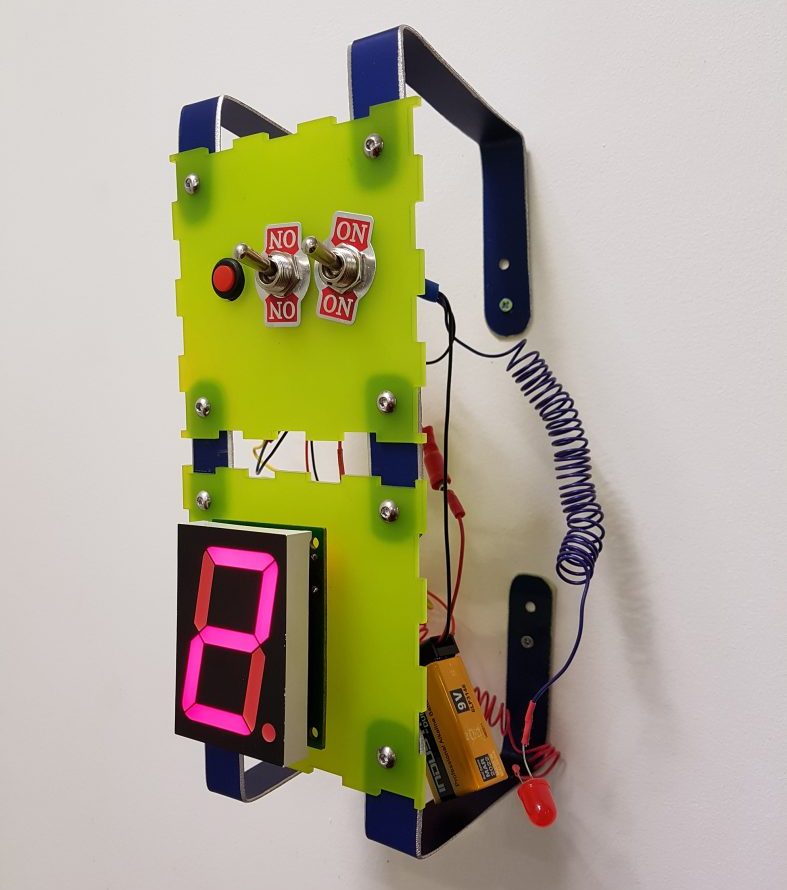THE PROJECT
In 2018 I was awarded a Heritage Lottery Fund grant to research women who had worked in the electronics manufacturing industry in Enfield from 1916 to present day. It was supported by Acava, an educational arts charity.
What was once a huge industry, employing many thousands of women no longer exists. Many of these women were working outside of the home for the first time as a result of changes in equality laws and circumstance.
My role was to research this history and make a body of work in response. I was artist-in-residence at a metal workshop in Building Bloqs for three months, taught workshops, held an exhibition and wrote a booklet.
It was a fascinating project, I talked to some amazing women, including 96 year old Daisy who had made searchlights during WWII and many others who reminisced about their working conditions and lives.

``My mum worked as a solderer, she always kept a pair of pliers in her handbag.``
THE WOMEN
After conscription in 1916 women were involved in all types of roles traditionally seen as male, including dangerous work such as making munitions.
For decades women have assembled, soldered, spot-welded and pressed in many types of industry along with piece or ‘home’ work to fit around their families.
Women proved to be adaptable and resilient and the work they did was important in progressing towards the right to vote in 1918. The argument that some jobs could only be ‘men’s work’ was undone.
For some, it provided an empowering confidence that women could put their hand to anything, which had a larger influence down the generations.
THE ARTWORKS AND EXHIBITION
The work the women did was mainly assembly on the production lines for instance soldering electronics onto the chassis of electronic goods such as radios. These are the metal structures that hold the electronic ‘guts’ together inside the gadgets. This hidden work seemed an apt parallel for the unsung work of the women who worked on assembly.
For the exhibition I made several sculptures based on the idea of chassis fashioned into my own NEE manufacturing label.
THE HERITAGE
Enfield sits on the outskirts of London. It has a rich heritage in manufacture such as the electrical and telecommunications industries. It was pivotal in the communication revolution during the 20th century, producing several ground-breaking technological innovations.
These industries were hugely important, with large-scale manufacture of vacuum tubes, cables and lightbulbs opening up the world to radio, broadcasting and television.
They employed thousands of women over generations in companies that were household names such as Fergusons and Thorn. Women were vital to Enfield’s success, but their role is largely undocumented.
‘LIGHT-UP’
Electronic Workshops
I taught a couple of workshops for women in the local community. We made an acrylic lightbox using a laser-cutter and then did some basic electronics. We soldered a circuit of six LED lights.
Everyone chose a woman who was inspirational to them to engrave on the box. These were then exhibited in the ASSEMBLY Exhibition.
THE RESIDENCY
I spent three months as artist-in-residence in a metal workshop at Building BloQs which is an open access workshops in Enfield.
I learnt to mig and tig weld and also use a plasma cutter. This is my most favourite tool ever! If you want to feel like you are drawing with fire, this is the tool for you.
An arc cuts through the sheet metal like butter allowing you to draw freehand, like this writing.
ASSEMBLY BOOKLET
This has ben a very brief overview of the project. If you’d like to learn more I wrote this 16-page booklet.
It contains many more heritage photos, interviews with women who worked in Enfield, including the aforementioned Daisy and more.
If this takes too long to upload, I am happy to send a PDF if you’d prefer. Contact me.









